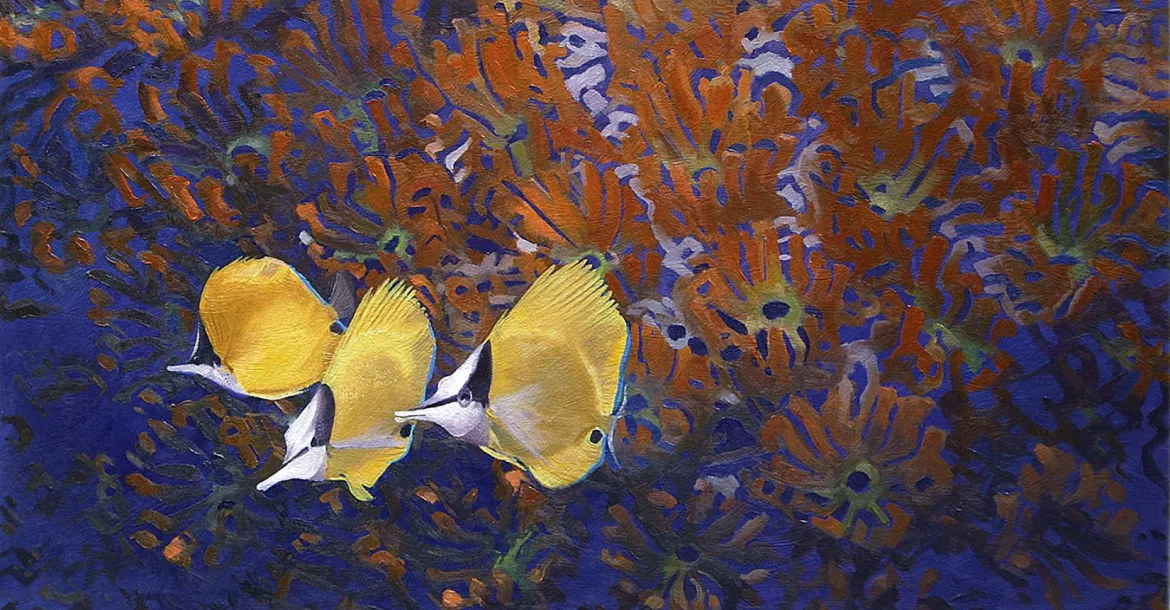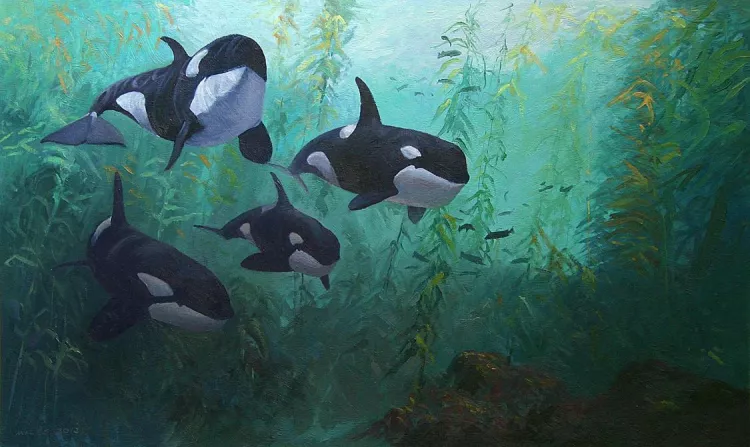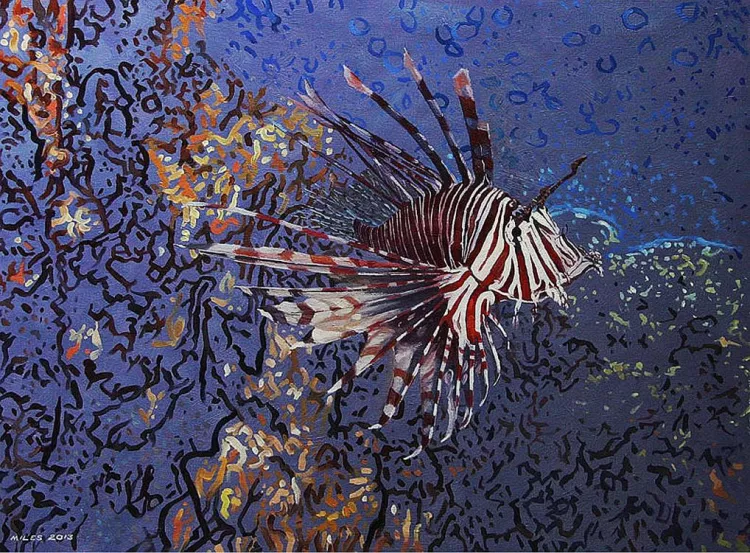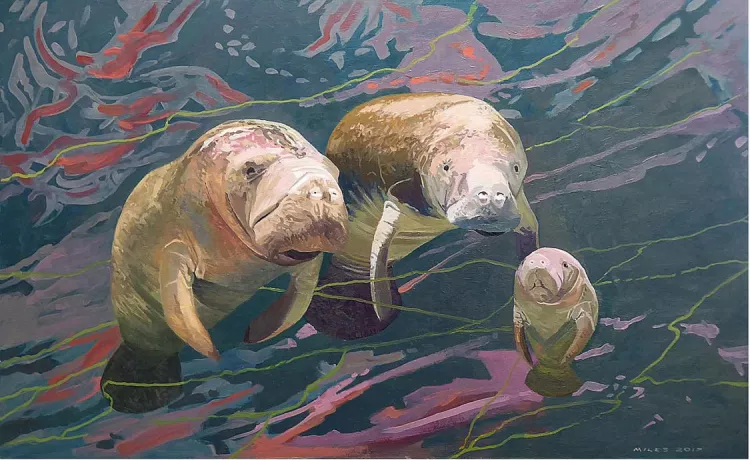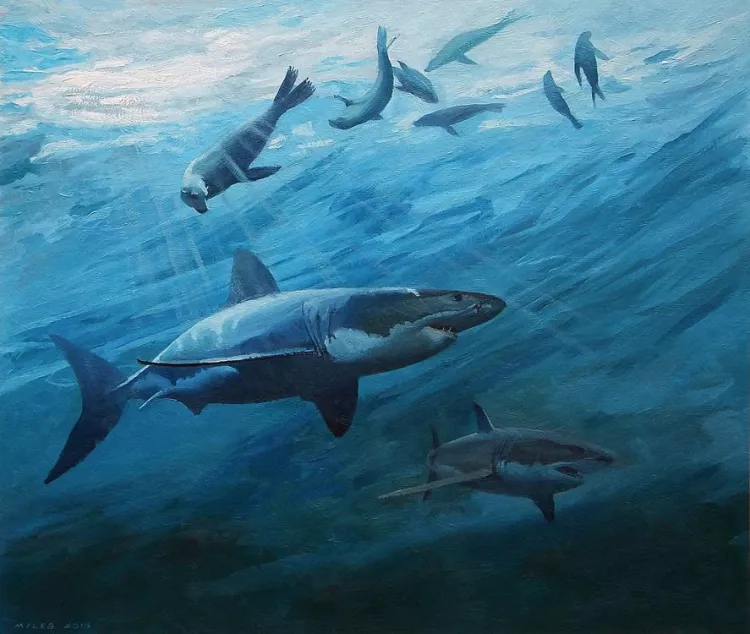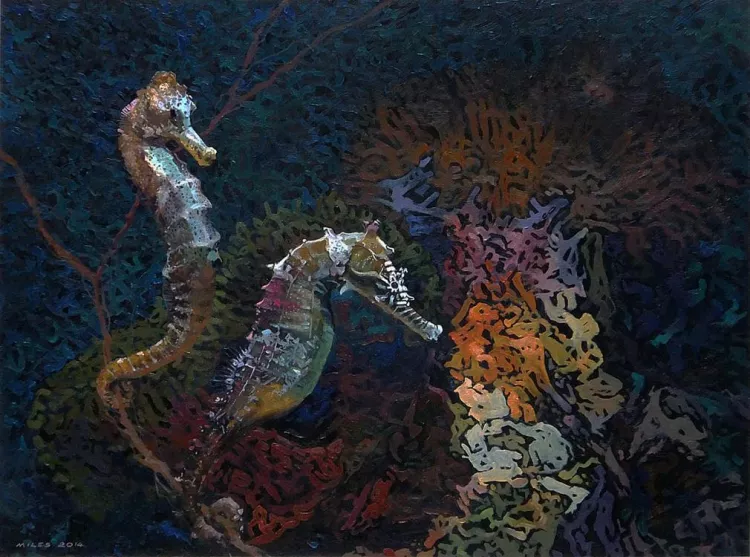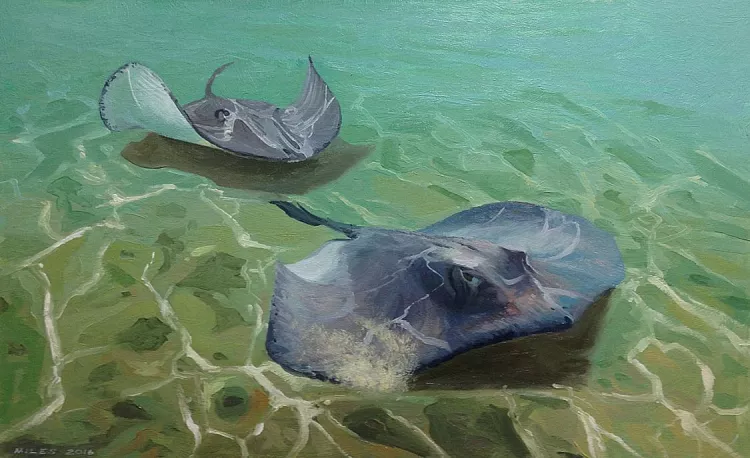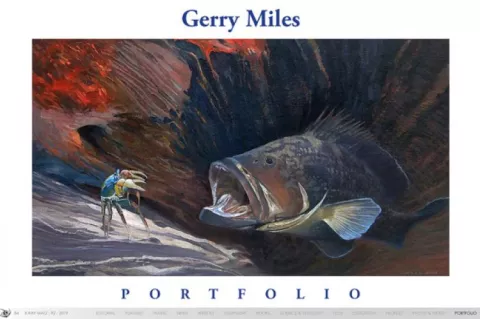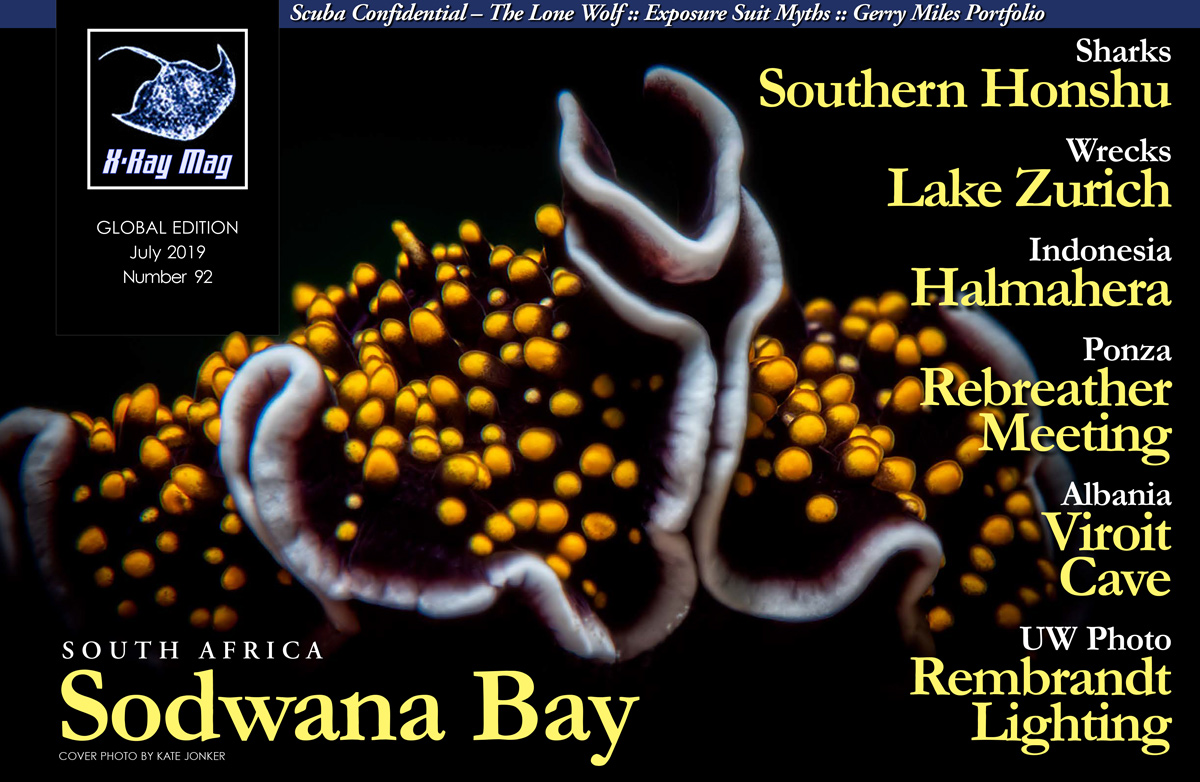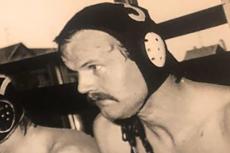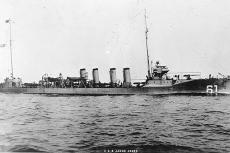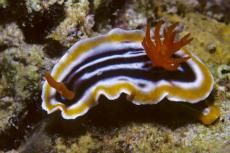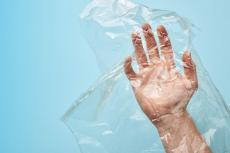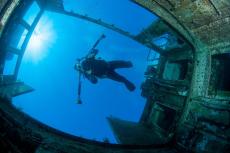
Gerry Miles Portfolio
British artist Gerry Miles paints marine life and reef scenes in brilliant color and dynamic compositions, often with abstract backgrounds that capture the thrilling vitality and sublime ambience of the underwater world.
X-Ray Mag interviewed the artist to find out more about his artwork and perspectives.
Contributed by
X-RAY MAG: Tell us about yourself, your background and how you became an artist.
GM: I was educated as a mechanical engineer, served a five-year student apprenticeship with an engineering company and became a management consultant specialising in logistics and materials handling. I later became vice president of a large, Dutch multi-national engineering company and retired in 2003. I have been painting and drawing since I was a young boy and decided upon retirement to pursue a new career as an artist. I am self-taught and paint both landscapes and underwater subjects.
X-RAY MAG: Why marine life and underwater themes? How did you come to these themes and how did you develop your style of painting?
GM: I started sub-aqua diving with a friend in 1963. We lived in Hampshire, England, and dived mainly along the southern coast. Our most popular diving venues were in Dorset, particularly Portland Bill, Swanage, Lulworth Cove, Chapman’s pool and Durdle Door. We had no dive training, and armed with the BSAC Divers Handbook, we learnt to dive as we went along, without incurring any accidents or injuries.
I joined the British Sub-Aqua Club in 1973, eventually qualifying as an Advanced Diver. I had a keen interest in underwater photography from the beginning and built my own underwater housings from Perspex or aluminium, with brass control linkages for both still and cine cameras. My first films were in Super 8 (film format) on Kodak High Speed Ektachrome (film). Finally, I used an HD video system with LED lighting. The advancements in underwater technology are mind-boggling, and underwater filming is now so much simpler.
I now have a considerable library of films that I have made over the years, and it is these images that I use to develop my paintings. I compile my compositions on a Wacom Intuos tablet using Adobe Photoshop, and once satisfied, scale up these designs to my painting boards. I produce my own textured painting boards and paint with either acrylics or Cobra water-mixable oils. This technique is ideally suited for dry brush techniques.
X-RAY MAG: What is your artistic method or creative process?
GM: I specialise in the careful application of contrast and tone in my paintings. This is the most critical element in creating mood and atmosphere. There are a series of free art tutorial videos on my website and on my Facebook page that cover tone and contrast, colour mixing and colour harmony, and there is also an underwater painting demo of my painting Sailfin Tangs. The introduction includes extracts from my underwater films.
The first step in my creative process is to have an idea upon which to build. This may be an expression of a diving experience that has left a memorable impression, or it may be triggered by my fascination with a particular type of sea creature. I may decide to render the whole painting as a realistic representation as would be experienced by a diver, or I may decide that the message would better be conveyed in a more abstract approach.
I work in layers and start with an underpainting using thinned colours. I am very careful even at this stage to establish the tonal range and contrast to create depth and to develop a colour harmony that suits the mood that I want to portray. Subsequent layers are applied using thicker paint, but much of the underpainting is allowed to show through.
The finished painting gets a coat of matt varnish to strengthen the surface against abrasion and add lustre to the colours.
X-RAY MAG: As a scuba diver, how have your experiences underwater influenced your art? In your relationship with reefs and the sea, where have you had your favourite experiences?
GM: Upon my retirement, my wife decided to take up diving and did the PADI open water and advanced courses. We spent 10 glorious years diving together around the world until age and ill health prevented us from continuing. During those 10 years we dived in the Maldives, Galápagos Islands, Cayman Islands, Indonesia, Great Barrier Reef, Ningaloo Reef, and did several trips to Egypt, diving sites such as the Brothers Islands.
My most memorable experience was diving with a 14m whale shark on Ningaloo Reef in northwestern Australia. It was immediately under the boat and swimming upside down. I have some unique footage as it did a barrel roll and headed straight towards me. I took a deep breath, and as I began to rise, it slid underneath me, and I filmed across the breadth of its back. Luckily, the tail didn’t clobber me as it swam on.
On another occasion in the Galápagos Islands, we were decompressing at 5m when a 3m Galapagos shark came cruising down the reef and glided past us within reach.
Shallow, relaxed dives on coral gardens are also a particular favourite of mine—I enjoy the kaleidoscope of colours as the sunlight sparkles on the corals, the shoals of damselfishes and multicoloured parrotfishes going about their business, and the occasional hawksbill turtle making an appearance.
In the Maldives, I filmed a large manta ray at a cleaning station. It kept turning and pirouetting as the cleaner wrasse got to work, looking on the entire world like some flexible stealth bomber just above my head.
I was filming a very large moray eel in a hole on a vertical wall in the Red Sea. I suddenly realised that his head was completely filling the screen and, attracted by his own reflection, had left the hole and stretched out to get a better view! My Egyptian divemaster proceeded to drape this creature around his neck. After the dive, I asked if he wanted a copy of the film. He said no. If his wife ever saw the footage, he would not be allowed to dive again.
During 40+ years of diving, I have never lost my fascination for being underwater and feel privileged to have lived in an age that made this possible. It seemed a natural progression for me to portray this magical world in my paintings, a unique opportunity for a scuba diver with artistic talent.
X-RAY MAG: What are your thoughts on ocean conservation and coral reef management and how does your artwork relate to these issues?
GM: Global warming is a fact! Plastic pollution of the world’s seas and oceans is a fact! Destruction of coral reefs through bleaching caused by rises in water temperature is a fact! Further industrial exploitation of the mineral wealth at the depths of the oceans will lead to more pollution and destruction of species! Polar melting of the ice caps is destroying the habitat of both predators and prey.
Coral reefs and mango swamps are the nursery breeding grounds for a vast diversity of species. Failure to preserve the delicate balance of these environments will lead to a dramatic reduction in breeding stocks and will eventually affect the fishing industry.
My artwork can only be a tiny voice in the efforts to stop this madness. I hope that, in some small way, by bringing my interpretation of the beauty and majesty of the underwater world to the attention of people, that they may feel the same desperate need that I have to preserve it for future generations.
X-RAY MAG: What is the message or experience you want viewers of your artwork to have or understand?
GM: My underwater paintings are not intended as a crusade to save our seas, but more a matter of sharing my diving experiences in a personal and unique way. Hopefully, they will inspire others to take up diving.
X-RAY MAG: What are the challenges or benefits of being an artist in the world today? Any advice for aspiring ocean artists?
GM: Recognition of uniqueness in art can be achieved by the development of style and technique, creating abstract forms with exciting dramatic colour or by painting and interpreting specialist subjects. I chose the latter.
My painting genre is realism, and although my landscape paintings are generally appreciated and considered to be competent, they will not stand out in a crowded gallery. Underwater paintings are still rare enough in the art world to make a statement alongside other works. My objective is to develop underwater paintings with realistic sea creatures portrayed within an abstract design with beautiful colour schemes to enhance their own exotic forms and shapes.
If you want to paint ocean subjects, get your head underwater and look around!
X-RAY MAG: How do people—adults and children—respond to your works?
GM: An art teacher in a college in Pennsylvania contacted me to say that she had given her class a special project to study and write an appreciation of my underwater paintings. Later, a student contacted me to ask if I would allow him to copy one of my works. He sent me his final effort, and it was a very competent rendition.
X-RAY MAG: What are your upcoming projects, art courses or events?
GM: I am going to further explore the development of placing sea creatures in abstract settings and see where this leads me. I have several art tutorial videos in the pipeline that I will launch on my website and Facebook page. I will be exhibiting in the Netherlands in July together with a group of local artists. ■
For more information, video tutorials or to purchase artwork, visit the artist’s website at: gerrymiles.nl.
"I hope that, in some small way, by bringing my interpretation of the beauty and majesty of the underwater world to the attention of people, that they may feel the same desperate need that I have to preserve it for future generations."
—Gerry Miles
